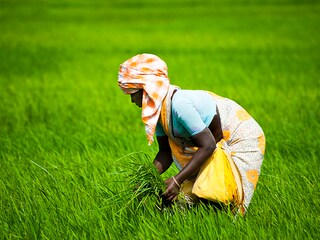Budget 2021-22: Agriculture a key focus area
While the finance minister introduced agricultural cess and focused on MSP's significance, the budget saw no mention of farm laws or any guarantees about a continuation of MSP, a key expectation from ...


“Though the budget has highlighted the outcomes of past MSP procurements, it has deterred from announcing any new proposals with regards to expanding the existing scope of MSP by guaranteeing some specified quantity for procurement under it,” says Arun Singh, Global Chief Economist, Dun and Bradstreet.
While the farmers continue their protest against the farm laws—the Farmers’ Produce Trade and Commerce (Promotion and Facilitation) Act, 2020 Farmers (Empowerment and Protection) Agreement on Price Assurance and Farm Services Act, 2020 Essential Commodities (Amendment) Act, 2020, there was barely any mention of the same during the Finance Minister"s budget announcement. “The budget saw no mention of farm laws, which is a sign that even the government doesn’t know what to do with the laws," says Sharanjit Singh, a farmer protesting the farm laws at Delhi"s Singhu border since November 26.
One major announcement is that of the Agricultural Infrastructure and Development CESS of Rs 2.5 per litre on petrol and Rs 4 on diesel. This will also be applied on several other goods including a 100 percent cess on alcohol, 2.5 percent on gold and silver bars, 17.5 percent on crude palm oil, 20 percent on crude soyabean, sunflower oil, 35 percent on apples and 40 percent on peas.
Taking the digitisation a step further the finance minister spoke about the online trading platform for agricultural commodities in India—e-NAM. Currently there are around 1.68 crores farmers registered on e-NAM. “Access of eNAM platforms to farmers and traders needs to be improved further. eNAM can definitely help in price discovery. The eNAM platform needs to be complemented with a lending and logistics platform to cater to farmers’ multiple needs,” says Hemendra Mathur, Venture Partner at Bharat Innovation Fund.
However, The Survey of Villages and Mapping with Improvised Technology in Village Areas (SVAMITVA) scheme that was introduced in October 2020, for six states initially, will now be implemented nationally. The scheme lets villagers use their property as a financial asset for taking loans and other financial benefits. So far, the finance minister stated, 1.80 lakh property-owners in 1,241 villages have been provided cards.
To boost value addition and exports of agricultural produce, the FM proposed to enlarge the scope of ‘Operation Green Scheme’ that is currently applicable to tomatoes, onions, and potatoes, to 22 perishable products. Agricultural credit target has been enhanced to Rs 16.5 lakh crores in FY22. “We will focus on ensuring increased credit flows to animal husbandry, dairy, and fisheries,” she stated.
Substantial investments in the development of modern fishing harbours and fish landing centres are expected, starting with five major fishing harbours–Kochi, Chennai, Visakhapatnam, Paradip, and Petuaghat. “We need to observe the vehicle for delivery of these funds and how it will reach the last mile. The proposal to raise fish production to 200 lakh tonnes by 2022-23 can be achieved only through focussed investments in aquaculture,” says Prasanna Manogaran, Founder of Aqgromalin, an agri-tech startup.
Though the government has increased allocation under Priority Sector Lending (PSL) to agriculture to Rs 16.5 lakh crores, Mathur says, “only 30 percent of Indian farmers have access to institutional credit. The challenge is to improve access of PSL loans to small holder farmers which need a strong digital platform for reducing transaction cost for bankers to build farmer access.”
First Published: Feb 01, 2021, 16:57
Subscribe Now